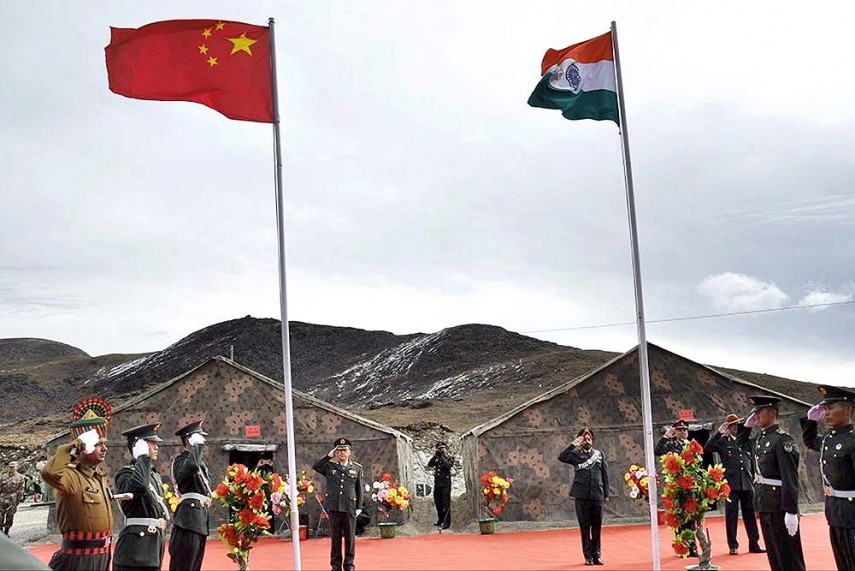Manas Dasgupta
NEW DELHI, Oct 17: The External Affair minister S Jaishankar’s optimism notwithstanding, India and China military and diplomatic level talks over Ladakh stand-off are learned to have failed to reach any solution with the two countries taking diametrically opposite stands on dis-engagement of troops on the border.
Diplomatic sources, however, said though the seventh round of talks ended without a concrete decision, the two sides have agreed to continue with the talks at different levels and each country considering the proposals of the other country with more open mind. The two sides are learnt to have exchanged “serious proposals” for disengagement during the seventh round which were currently being studied by the Indian government.
The sources said the disagreement between the two countries was on the steps required to be taken for the final troop withdrawal. China has rejected India’s proposal for dis-engagement to be followed by de-escalation and instead has proposed that tanks and artillery support should be mutually withdrawn first so that vertical escalation is averted in case of an accident.
The Indian position on the other hand is that there should be comprehensive disengagement of troops through a phased withdrawal, a verification process, and then a de-escalation. The disengagement, New Delhi has maintained, should involve troops going back to their pre-April 2020 positions along the 1597 km Line of Actual Control (LAC) in Ladakh. Once this happens, de-escalation can follow.
Experts say that strategically thinning out of artillery and tank support from the friction points does not work in favour of the Indian Army as the People’s Liberation Army has built roads right up to Beijing’s perception of LAC and has the capacity and capability to deploy much faster than Indian armour.
According to senior officials, the Indian Army will have to remain deployed in the heights of East Ladakh through the winter, till the PLA decides in favour of disengagement and restoring status quo ante. “The Indian Army has been trained in high altitude deployments and will be on guard till the situation is mutually resolved. The Indian position is comfortable and well-defended,” a senior official said.
While the PLA has come up to its perception of the LAC on the north banks of Pangong Tso and Gogra-Hot Springs, the Indian Army has come up to its perception of the LAC on the south bank of the high altitude salt lake with troops sitting on the Rezang La-Rechin La ridgeline.
The trust deficit has come from China’s behavior on the border, officials pointed out. China insisted that they want peace, but was unable to explain the massive troops build up. “This has led to a trust deficit. The situation still remains volatile and anything could happen. However it is important to continue talking,” the officials noted.
During the last military commander level talks, China had insisted that India vacate the southern bank positions first. India on the other hand demanded that the both banks be vacated by both the sides to mutually agreed positions. Squarely blaming India for the stand-off, China on Tuesday had described India’s development of border infrastructure, coupled with enhanced military deployment, as the “root cause” of the current tensions along the LAC.
India in response on Thursday castigated Beijing for its repeated complaints about infrastructure projects on the Indian side of the border with a clear warning, asserting that China should not comment on India’s internal matters just as it expected other countries to steer clear of its internal affairs.
Jaishankar had also commented that the violent clashes on the India-China border in June had a very deep public and political impact and has left the relationship “profoundly disturbed.”
However, despite the mutual accusation, Jaishankar was optimistic that something tangible would develop from the continuing dialogue as both sides had agreed to keep the talks on. Refusing to give details of what transpired in the seventh round of talks, Jaishankar had stated on Thursday “what is going on is something confidential between the two sides.”
“There is not very much that I am in a position to say in public. I certainly do not want to prejudge it,” he added.
The two sides also issued a joint media statement expressing optimism of a solution. “India and China have finished the seventh round of talks between senior military commanders on October 12. Both sides have agreed to continue with the dialogue process to arrive at a mutually acceptable solution for early disengagement in eastern Ladakh.
“The two sides had a sincere, in-depth and constructive exchange of views on disengagement along the Line of Actual Control in the western Sector of India-China border areas. They were of the view that these discussions were positive, constructive and had enhanced understanding of each other’s positions,” said the statement.
Many of the country’s national security advisors, however, feel that China’s attempt to drag on the talks could have some links with the presidential election in the United States where it believed the incumbent president Donald Trump would go out of the office after the November 3 polling. They believe that the PLA would try and placate India though talks till the November 3 and then increase hostilities all along the 3488 km LAC if President Trump did not return to White House.
The other school of thought, however, maintain that the PLA aggression on LAC had nothing to do with the US Presidential elections as the friction started in Galwan-Gogra-Hot Springs in April, when the American elections were not even on the horizon. These section believe that the PLA move on LAC was aimed at restoring the November 7, 1959, line and “punishing” India for publishing the Ladakh map on November 2, 2019. The aggression has partly to do with the internal situation in China with the spread of coronavirus from Wuhan, the resulting impact on the economy, and the ensuing political ferment.

